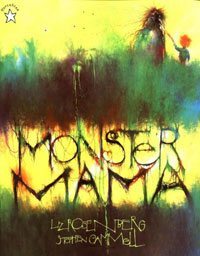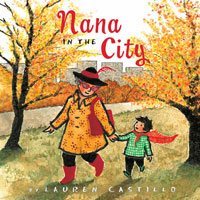by Jackie Briggs Martin and Phyllis Root

We both love finding forgotten treasures in the “removed from circulation” sections of libraries or in second hand bookstores. Some of these books call to us because we remember them from our childhoods: the Babar books written out in longhand, the Flicka, Ricka, Dicka stories about Swedish triplets, Marcia Brown’s Stone Soup.
Some books enchant that we’ve never read before: When the Wind Blew by Margaret Wise Brown, Run, Run, Run by Clement Hurd, The Treasure of Topolobampo by Scott O’Dell (and illustrated by the wonderful Lynd Ward). These books seem like forgotten treasures that we wish would be remembered. They remind us, as well, that the stories we tell now are very much akin to the stories told before us. The length may differ, the tone may have changed with time, but the hearts of these stories still connect with readers today.
We want to look at stories whose hearts have stayed strong, whether those stories are fifty years old or fifteen years old — or even more recent. We hope you, too, will find the older stories enchanting enough to look them up, either in libraries on in online book sites such as Alibris or AbeBooks. Or perhaps, like we do, you might wander the aisles of bookstores and library shops, looking for that book that reaches out, taps you on the shoulder, and says, “Read me. You’ll be glad you did.”
Our first finds have to do with mothers, a good topic for early May. We are calling it “What’s a mother to do?”
Moms are the pole stars of childhood, the ones who make us feel safe in the scariest, worrying-est of times. And in this, our first Two for the Show column, we want to take a look at two classic picture books about Moms and see what the moms are doing.
 Monster Mama, written by Liz Rosenberg and illustrated by Stephen Gammell (Philomel, 1993) celebrates language and Moms. It begins:
Monster Mama, written by Liz Rosenberg and illustrated by Stephen Gammell (Philomel, 1993) celebrates language and Moms. It begins:
Patrick Edward was a wonderful boy, but his mother was a monster. She lived in a big cave at the back of the house. [page turn]
Sometimes she painted, sometimes she gardened, and sometimes she tossed Patrick Edward lightly up and down in the air, for fun.
She also teaches Patrick Edward how to roar and how to cast a spell that could put almost anyone to sleep. One day he runs into bullies who tie him to a tree and say, “Your mother wears army boots.” Patrick Edward roars, breaks away, and chases the boys. “Who knows what might have happened next — but Monster Mama heard the echoes of his roar. She zoomed out of her cave…” and straight to Patrick Edward. Once things are set to right and they’ve all shared cake (which the bullies made) she says to Patrick Edward, “No matter where you go, or what you do…I will be there. Because I am your mother, even if I am a monster — and I love you.”
What we love in this book is the shimmering question: Is she really a monster? She gardens, she tosses lightly, she likes sweets. But she is fierce and she can cast spells. There is humor in this question and humor in the language — “Villains, farewell!” Patrick Edward says to the bullies. And, “Strength is for the wise, not the reckless. — More cake please.”
 In Hazel’s Amazing Mother by Rosemary Wells (Dial, 1985) Hazel goes off on her own to “buy something nice” for a picnic. She gets lost. And that’s when the bullies show up. They take Hazel’s doll and throw her until the stuffing falls out. Hazel cries, “Oh, Mother…Mother, I need you.” Just then a wind comes up, blows the picnic blanket — along with Hazel’s mother— right over the town into the very tree under which Hazel sat. Hazel’s mother takes charge.
In Hazel’s Amazing Mother by Rosemary Wells (Dial, 1985) Hazel goes off on her own to “buy something nice” for a picnic. She gets lost. And that’s when the bullies show up. They take Hazel’s doll and throw her until the stuffing falls out. Hazel cries, “Oh, Mother…Mother, I need you.” Just then a wind comes up, blows the picnic blanket — along with Hazel’s mother— right over the town into the very tree under which Hazel sat. Hazel’s mother takes charge.
A tomato hit Doris smack between the eyes.
“Don’t make a move without fixing Eleanor!” Hazel’s mother roared.
She also rumbles, laughs thunderously, brings about repairs.
“Oh, mother,” said Hazel, “‘how did you do it?”
“It must have been the power of love,” said Hazel’s mother.
These two stories are funny, not treacly. When Hazel’s mother tells the mean Doris to fix Hazel’s doll, she tosses down a pocket sewing kit — and three more tomatoes. The bullies don’t just work at fixing— “The boys scrubbed feverishly. Doris sewed like a machine.”
 And these stories are reassuring. Kids know they can’t do it all — even though it seems we sometimes expect them to in our books. How many times have we heard that kids should solve their own problems in our stories? Perhaps that’s changing. Nana in the City by Lauren Castillo (Clarion, 2014) — a 2015 Caldecott Honor Book — features a grandmother who knits a cape for her grandson who’s worried about being in the city. The cape does the trick, and the grandson begins to enjoy the city. It’s not bad for kids to see examples of grown-ups who can help. They are the bridge to get kids to their own stronger place.
And these stories are reassuring. Kids know they can’t do it all — even though it seems we sometimes expect them to in our books. How many times have we heard that kids should solve their own problems in our stories? Perhaps that’s changing. Nana in the City by Lauren Castillo (Clarion, 2014) — a 2015 Caldecott Honor Book — features a grandmother who knits a cape for her grandson who’s worried about being in the city. The cape does the trick, and the grandson begins to enjoy the city. It’s not bad for kids to see examples of grown-ups who can help. They are the bridge to get kids to their own stronger place.
A few other books featuring mothers:
- Owl Babies by Martin Waddell
- Runaway Bunny by Margaret Wise Brown
- Are you My Mother? by P.D. Eastman
- A Chair for My Mother by Vera B. Williams
- Feeding the Sheep by Leda Schubert

Thanks for highlighting these treasures
Wonderful to revisit some older books and learn about ones I’ve missed! Happy Mother’s Day to you two and to all who read to kids everywhere.
What a great topic for a column! I look forward to hearing about more of your treasured stories!